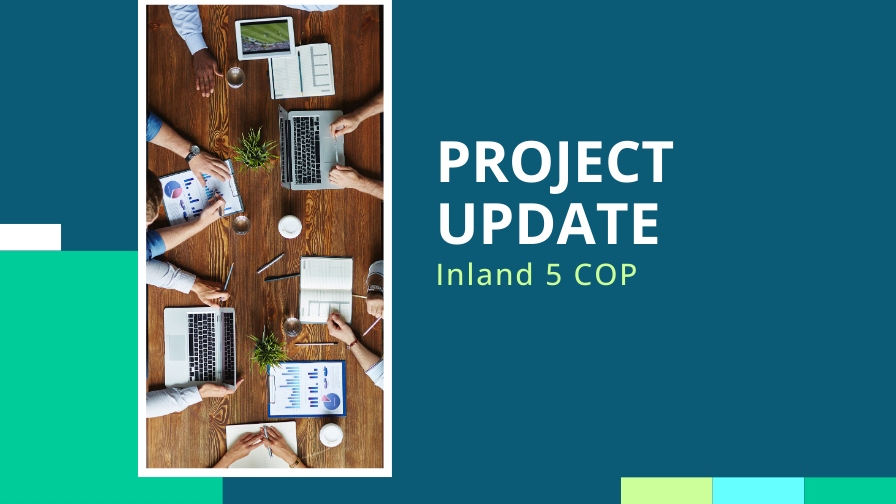Over the past year, INSPIRE, with funding support by the DG Murray Trust (DGMT), has supported something remarkable in South Africa’s renewable energy sector – the Inland 5 Community of Practice (CoP).
This collaborative experiment set out to answer a bold question: What if Independent Power Producers (IPPs) and Community Trusts could work together – not competitively, but collectively – for deeper social impact?
A Year of Foundations and Firsts
The Inland 5 CoP brought together five IPPs and a Community Trust around a shared vision of doing social performance differently. After months of dialogue, deep dives, and trust-building sessions, the group reached a milestone, aligning on a common focus.
They chose education – specifically high school interventions – as their anchor theme. This was a strategic move as practitioners had seen how gaps in secondary education perpetuate cycles of disadvantage, and they wanted their collaboration to target the roots of youth unemployment and inequality.
With this focus, the group selected a DGMT incubated programme – the Public Schools Partnerships (PSP) as their pilot project. While the implementation of the programme is not yet underway, preparations are well advanced. A Memorandum of Understanding (MoU) and a complementary Service Level Agreement (SLA) are in the final stages of development – critical steps towards ensuring collective accountability, shared governance, and clarity on roles and resources.
Building Trust, Despite the Odds
Of course, the journey has not been without challenges. Social performance practitioners were already stretched thin, managing community grievances, compliance demands, and at times even protest action. Aligning five IPPs and a community trust meant navigating different procurement systems, approval timelines, and financial realities.
Legal reviews and budget constraints often slowed progress, while governance issues further complicated decision-making. Yet through it all, the CoP continues to find ways to adapt, hosting in-person strategy sessions, online deep dives, leaning on one-on-one check-ins, and creating a space for honest reflection.
The real glue holding the CoP together has been relational infrastructure – a commitment to trust, empathy, and collaboration. At the same time, INSPIRE has continually worked behind the scenes to ensure that, through the most difficult periods, the CoP holds together. We have worked tirelessly to ensure that the magic of the Inland 5 CoP did not fizzle away, but instead became deeper and more remarkable.
Shifting the Sector
One of the most significant breakthroughs was engaging with the IPP Office, a critical player in the Renewable Energy Independent Power Producer Procurement Programme (REIPPPP). Their presence at the March 2025 strategy session signalled growing recognition of the CoP as a credible model for collaborative action.
The Inland 5 has not just been a project, but a step towards showing what is possible. Even within a highly regulated and competitive sector, it points to the potential for IPPs to look beyond individual interests and work together toward something collectively meaningful. We aspire to continue building on this spirit of collaboration, despite the challenges of such a demanding environment.
Lessons and the Road Ahead
From this year-long journey, several lessons stand out:
- Trust takes time and must be nurtured consistently.
- Collaboration requires more than shared documents; it needs shared purpose and shared time.
- Long-term funding models are essential if such initiatives are to move beyond pilots and create lasting change.
- Policy alignment is critical: the CoP must continue to engage national structures like the Presidential Climate Commission and JET-P to embed collaborative approaches in the just transition agenda.
Perhaps most importantly, this experience has shown that cross-IPP collaboration is not only possible—it is powerful. By working together, practitioners are continuing to develop a blueprint that others in the renewable energy sector can learn from and replicate.
A Collective Win
Having reached a year of the CoP, there is much to celebrate. What began as an experiment has grown into a living model of how South Africa’s renewable energy sector can reimagine social performance — learning from the vision, process, and outcomes.
It is a story of persistence, courage, and above all, collaboration. The Inland 5 CoP has laid a foundation that, with the right support, could transform not only the communities it serves but the way development partnerships are done in this sector.
The just energy transition is about more than clean power—it is about justice, inclusion, and shared prosperity. Through the Inland 5 CoP, we have only glimpsed what that future might hold, and we aspire to play a part in making it a reality.




